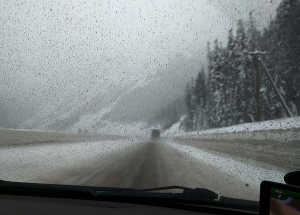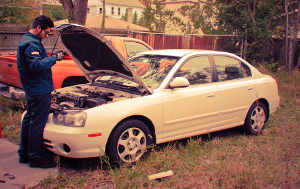Driving In Severe Weather Conditions

As the Met Office continues to issue severe weather warnings across the UK, it’s crucial for private and motor trade drivers to be prepared.
Large areas of low pressure are bringing heavy rain, snow, and ice, accompanied by strong winds and freezing temperatures. Storm Bert has already caused gusts exceeding 70mph, widespread flooding, and significant travel disruption. With conditions expected to remain hazardous, many police forces have urged drivers to avoid traveling unless necessary.
To help you stay safe during this challenging weather, below are some tips for driving in heavy rain, strong winds, and snow, for example, if your vehicle breaks down in torrential rain, keep the bonnet closed to prevent water from damaging the electrical system.
Driving in Heavy Rain and Flooding
Insurance brokers know only too well wet weather significantly increases the risk of breakdowns and accidents, so before hitting the road it’s a good idea to carry out the following:
Check Your Wipers: Ensure both front and rear windscreen wipers are in good condition and replace them if needed.Refuel: Traffic jams and increased use of lights, heaters, and wipers can reduce fuel economy, leave with a full tank or fuel or vehicle charge.Stay Informed: Listen to local news updates for the latest travel conditions.Tyres: Make sure your tyres meet the recommended legal tread depth for adequate grip, if not head to your local tyre dealer.Drive Cautiously: Reduce speed and leave more space between your car and the vehicle ahead, stopping distances are greater in wet conditions.Dip Headlights: Improve visibility for yourself and others, avoid using rear fog lights as they can obscure brake signals and dazzle other motorists.Aquaplaning: If your steering feels light, ease off the accelerator, avoid braking, and allow your car to regain grip gradually.Prevent Spray: Be considerate of pedestrians and cyclists when driving through standing water.
Navigating Flooded Roads
Driving through deep water requires care and preparation:
Gauge the Depth: Stop and check the water depth before proceedingChoose an Alternate Route: If the water is too deep.Maintain Momentum: If the puddle is shallow enough to cross, use a low gear and keep engine revs high to create a bow wave and avoid stalling.Test Your Brakes: After crossing, lightly press the brake pedal to evaporate excess moisture and restore braking efficiency.Avoid Engine Damage from Flooding: If your engine stalls after driving through water, do not attempt to restart it. Doing so can cause severe damage, such as an air lock or broken pistons. Instead, turn on hazard lights, call for assistance, and have the vehicle professionally inspected.
Snow and Ice
Snow and ice add additional challenges for all road users:
Winter Ready: Ensure your car is winter ready with suitable tyres, de-icer, and a scraper.Stay Aware: Drive slowly and avoid sudden movements to maintain traction.Braking: Keep a safe distance from other vehicles, stopping distances increase significantly on icy roads.
Plan Your Journey
A little planning goes a long way in avoiding costly repairs at the local motor trade mechanic, and an unnecessary insurance policy claim. Keep an eye on the weather forecast, ensure your vehicle is in good condition, and adjust your driving to match weather conditions.
By taking these precautions, you can navigate severe weather safely, and with confidence.





